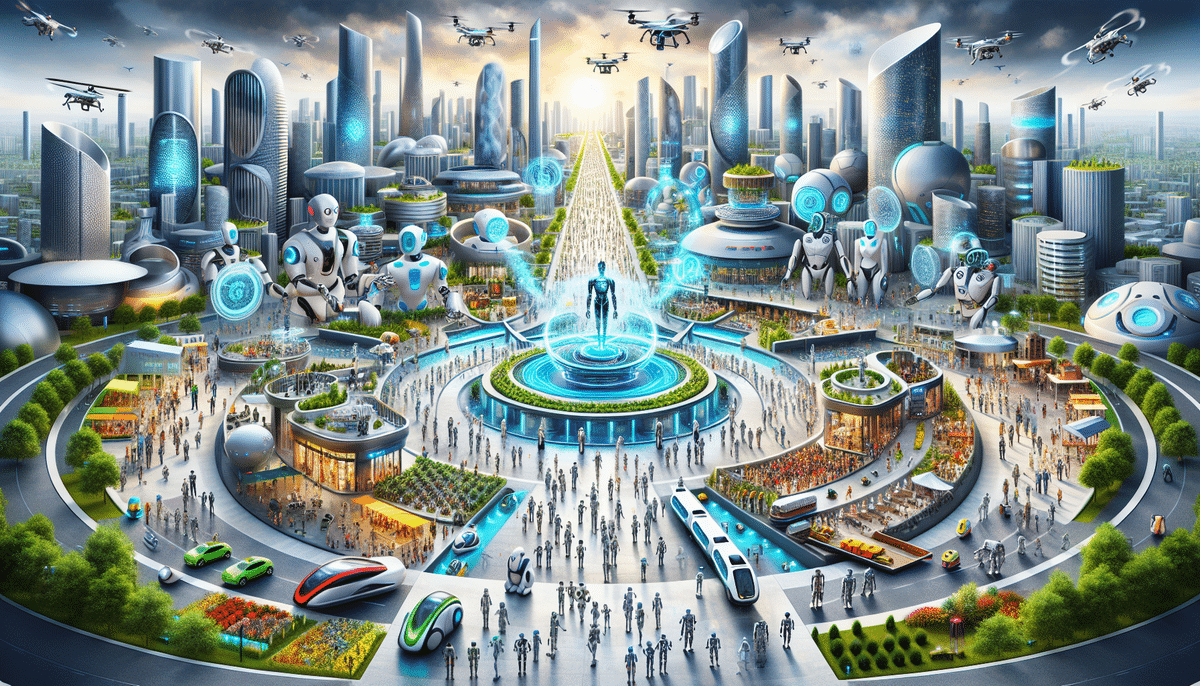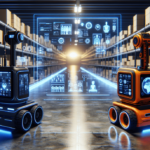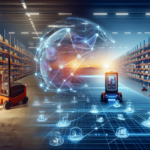The Potential Impact of Robotics and AI
Robots have been around for quite some time, but in recent years, they have become more sophisticated and advanced than ever before. These machines are no longer limited to assembly lines and manufacturing plants—they are now being used in a wide range of industries, from healthcare to transportation. According to a report by McKinsey & Company, by 2030, robots and automation could displace up to 30% of jobs worldwide. As the technology behind robotics continues to evolve and improve, it's becoming increasingly clear that these machines could eventually take over many aspects of our lives. In this article, we will explore the potential impact of robots and how they could change the world as we know it.
The Evolution of Robotics
From Early Inventions to Modern Innovations
The history of robotics dates back to ancient times when inventors constructed machines that could mimic human movement. However, it wasn't until the Industrial Revolution that the groundwork was laid for the development of modern robots. The first robots were simple, rudimentary machines that were used in the manufacturing industry. For example, the first programmable robot, Unimate, was introduced in the early 1960s and was used in General Motors' assembly lines.
Over time, robotics technology has become more advanced, and robots are now capable of much more than just repetitive tasks. They can perform complex surgeries, assist with space exploration, and even interact with humans in a variety of ways. According to a report by ABI Research, the global robotics market is expected to reach $215 billion by 2025.
One of the most significant advancements in robotics technology has been the development of artificial intelligence (AI). With AI, robots can learn and adapt to new situations, making them more versatile and useful in a variety of industries. For example, in the healthcare industry, robots with AI can analyze patient data and assist with diagnoses, improving patient outcomes.
Another area where robotics technology has made significant strides is in the field of autonomous vehicles. Self-driving cars and trucks are becoming more common, and they have the potential to revolutionize transportation. With the ability to navigate roads and traffic on their own, autonomous vehicles could reduce accidents and traffic congestion, making transportation safer and more efficient.
Advances in Artificial Intelligence and Robotics
A Game-Changer for Robotics
One of the most significant advancements in robotics has been the integration of artificial intelligence (AI) technology. With AI, robots can learn from their environment and adapt to new situations, creating more flexibility and efficiency. They can recognize objects, interpret speech, and even make decisions based on data analysis. According to Forbes, AI-driven robots are expected to contribute significantly to the economy, with an estimated value of $3.7 trillion by 2028.
The rise of AI in the robotics industry has opened up a whole new world of possibilities, which could eventually lead to the creation of fully autonomous machines that can perform tasks without human intervention. However, the integration of AI in robotics also raises concerns about the potential impact on employment.
As robots become more advanced and capable of performing complex tasks, there is a risk that they could replace human workers in certain industries. This has led to debates about the need for retraining and reskilling workers to adapt to the changing job market. Despite these concerns, the benefits of AI in robotics cannot be ignored, and it is likely that we will continue to see advancements in this field in the coming years.
Applications of Robotics Across Industries
Healthcare
In the healthcare industry, robots are being used to perform surgeries, assist with rehabilitation, and even diagnose diseases. They can work longer hours than human doctors and nurses and provide more consistent and accurate care. For example, the da Vinci Surgical System, a robotic surgical system, has been used in over 7 million surgical procedures worldwide, increasing precision and reducing recovery times.
Robots in healthcare can also assist with patient care by performing tasks such as monitoring vital signs, delivering medications, and providing companionship to patients. This allows healthcare professionals to focus on more complex tasks that require human intervention.
Manufacturing and Production
Manufacturing and production are two areas where robots have already made a significant impact. They can perform tasks faster and more efficiently than humans, reducing production costs and increasing output. According to GlobalData, the adoption of robotics in manufacturing is expected to grow by 15% annually over the next decade.
Additionally, robots can work in hazardous or challenging environments, such as underwater or in space. For example, robotic arms are used in deep-sea exploration and repairs, where human presence would be risky.
Transportation
The transportation sector is one area where robots and AI are set to have a significant impact. Autonomous vehicles, such as self-driving cars and trucks, could reduce accidents and traffic congestion, while also improving fuel efficiency. The National Highway Traffic Safety Administration (NHTSA) reported that 94% of serious crashes are due to human error—which autonomous vehicles could potentially reduce.
Drones could revolutionize the delivery industry, allowing goods to be transported quickly and efficiently over long distances. Companies like Amazon are already testing drone deliveries, potentially reducing delivery times by up to 50%.
However, there are also concerns about the safety and privacy implications of these technologies, which must be addressed before they become more widespread.
Another potential benefit of autonomous vehicles and drones is their ability to reduce carbon emissions. With the rise of electric and hybrid vehicles, and the use of renewable energy sources to power drones, these technologies could help to significantly reduce the transportation sector's contribution to climate change. Additionally, the use of autonomous vehicles and drones could lead to a reduction in the number of vehicles on the road, as well as the need for large warehouses and distribution centers, which could have a positive impact on urban planning and land use.
Environmental Solutions
Robots also have the potential to address various environmental challenges, from cleaning up waste to monitoring pollution. For example, autonomous underwater robots are used to inspect and maintain pipelines, reducing the risk of leaks and environmental contamination.
Drones can be deployed to monitor wildlife populations, track deforestation, and assess the health of ecosystems, providing valuable data for conservation efforts. According to a study by ScienceDirect, the use of robotics in environmental monitoring can increase data accuracy and coverage while reducing human labor costs.
Additionally, robots can be designed to be energy-efficient and reduce waste, contributing to a more sustainable future. For instance, EnergyIR Robotics develops robots that optimize energy consumption in industrial processes, leading to significant reductions in carbon emissions.
By leveraging robotics technology in the fight against climate change and other environmental issues, we can create a healthier planet for future generations.
Societal and Economic Impacts of Robotics
Employment and Education
The long-term impact of robotics on society is still uncertain, but there is no doubt that these machines will change the way we live and work. As robots become more advanced and widespread, they will likely lead to job displacement and a need for new skills and education. According to the World Economic Forum, by 2025, machines and algorithms will displace 85 million jobs but also create 97 million new roles more adapted to the new division of labor between humans, machines, and algorithms.
This shift will require us to rethink our approach to education and training, ensuring that future generations are prepared for a world where robots and automation are commonplace. Emphasizing STEM (Science, Technology, Engineering, and Mathematics) education, as well as soft skills like critical thinking and creativity, will be essential.
Workplace Automation: Benefits and Drawbacks
Robots in the workplace can boost productivity and efficiency, reducing costs and increasing output. They can perform dangerous or repetitive tasks, freeing up human workers to focus on more complex activities. For instance, according to World Bank, automation could increase labor productivity growth globally by 0.8% annually.
However, at the same time, robots can also displace human workers, resulting in job losses and the need for new skills. The impact of robotic automation on the workforce is a complex issue that requires careful consideration and planning.
One of the benefits of robotic automation is that it can improve the quality of work. Robots can perform tasks with greater precision and accuracy than humans, reducing errors and improving the overall quality of the work. This can be particularly important in industries such as manufacturing, where even small errors can have significant consequences. For example, NIST has found that precision engineering robots can reduce defects by up to 50%.
On the other hand, one of the drawbacks of robotic automation is the initial cost of implementation. Purchasing and installing robots can be expensive, and may require significant investment in infrastructure and training. Additionally, robots require maintenance and repair, which can also be costly. According to PwC, businesses could spend around $20 billion annually on automation-related costs by 2030.
Companies must carefully weigh the potential benefits against the upfront and ongoing costs of implementing robotic automation in the workplace.
Ethical and Regulatory Considerations
Robot Ethics: Balancing Risks and Rewards
Robot ethics are a crucial consideration in the development of robotics technology. There are many ethical questions surrounding the use of robots, such as whether they should be programmed to prioritize human life, how to prevent robots from being used for harmful purposes, and how to ensure that robots do not perpetuate biases or discrimination. According to the Stanford Encyclopedia of Philosophy, ethical frameworks are essential to guide the responsible development and deployment of AI and robotics.
As we continue to develop robots and AI, it's vital that we consider the ethical implications of these technologies and work to mitigate potential risks. This includes implementing robust security measures to prevent misuse, ensuring transparency in AI algorithms, and promoting inclusive design to avoid biases.
Legal and Regulatory Hurdles
There are many challenges associated with the development and implementation of robotic technology. One of the biggest challenges is the lack of clear regulations and guidelines regarding the use of robots in various industries. Without standardized regulations, it becomes difficult to ensure safety, reliability, and ethical use of robotics technology.
Additionally, there are concerns about the potential for robots to cause harm, especially in areas such as healthcare and transportation. For example, ensuring that autonomous vehicles adhere to safety standards and can make ethical decisions in critical situations is a significant challenge.
Addressing these challenges will require collaboration between experts, policymakers, and industry leaders to ensure that we can safely and effectively integrate robots into our daily lives. Initiatives like the European Commission’s robotics strategy aim to create a framework that promotes innovation while ensuring safety and ethical standards.
Robot Security Concerns: Preventing Cyberattacks and Data Breaches
As with any technology, robots can be vulnerable to cyberattacks and data breaches. If robots are used in critical industries, such as healthcare or transportation, a cybersecurity breach could have severe consequences. According to Cybersecurity Insiders, the rise of connected robots increases the surface area for potential cyber threats.
To prevent such incidents, it's essential to ensure that robots are developed with security in mind, with appropriate measures in place to prevent unauthorized access or control. This includes implementing strong encryption, regular security updates, and robust authentication mechanisms.
Furthermore, organizations should establish comprehensive cybersecurity policies and conduct regular security audits to identify and mitigate vulnerabilities. Collaboration between cybersecurity experts and roboticists is crucial to develop resilient robotic systems.
Ethical Considerations in Developing Robotic Technologies
Throughout the development of robotics technology, ethical considerations must be at the forefront. Robots must be designed with the safety and well-being of humans as a top priority, and the impact on jobs and society must be carefully considered. According to the Ethics & International Affairs journal, incorporating ethical principles in robotics development helps prevent misuse and promotes beneficial outcomes.
Additionally, the use of robots must be carefully regulated to prevent misuse or abuse. This includes ensuring that robots are not used for harmful purposes, such as autonomous weapons, and that they respect privacy and confidentiality in sensitive applications like healthcare.
By prioritizing ethical considerations, we can ensure that robotics technology is used to improve the lives of humans, rather than causing harm. Establishing ethical guidelines and fostering interdisciplinary collaboration between ethicists, engineers, and policymakers is essential for responsible robotics development.
Future Prospects and Challenges
The Future of Human-Robot Interaction
As robots become more advanced, they will inevitably interact more with humans. There are already robots designed for specific roles, such as home assistants or customer service representatives. For example, Amazon Echo uses AI to assist with household tasks, while robots like Pepper are used in customer service to interact with customers and provide information.
However, there are still limitations to these interactions, such as the inability to understand complex emotions or cultural differences. According to a study by Human-Robot Interaction Journal, emotional intelligence in robots remains a significant challenge.
As we continue to develop robots, we must consider how they will interact with humans and work to create machines that can communicate effectively and appropriately. This involves advancements in natural language processing, emotional recognition, and adaptive learning to enhance the quality of human-robot interactions.
The Rise of Social Robotics
One area of robotics that is becoming increasingly popular is social robotics, where robots are designed to interact with humans on a social level. These robots can be used in settings such as nursing homes or classrooms, providing companionship or support. For example, Paro the therapeutic robot is used to provide comfort to elderly patients, helping to reduce feelings of loneliness.
While social robotics has the potential to improve our lives, there are also concerns that this technology could replace human connections, leading to loneliness or isolation. A study published in JSTOR suggests that overreliance on social robots could diminish human-to-human interactions.
It is important to strike a balance between utilizing robots to enhance social well-being and maintaining genuine human relationships. Ethical design and thoughtful implementation are key to ensuring that social robots complement rather than replace human interactions.
Conclusion
In conclusion, robotics technology is set to have a significant impact on our world in the coming years and decades. While there are many benefits to this technology, there are also significant challenges and potential risks that must be addressed. By working together to develop ethical guidelines and appropriate regulations, we can ensure that robotics technology is used to improve our lives and protect our world.




















